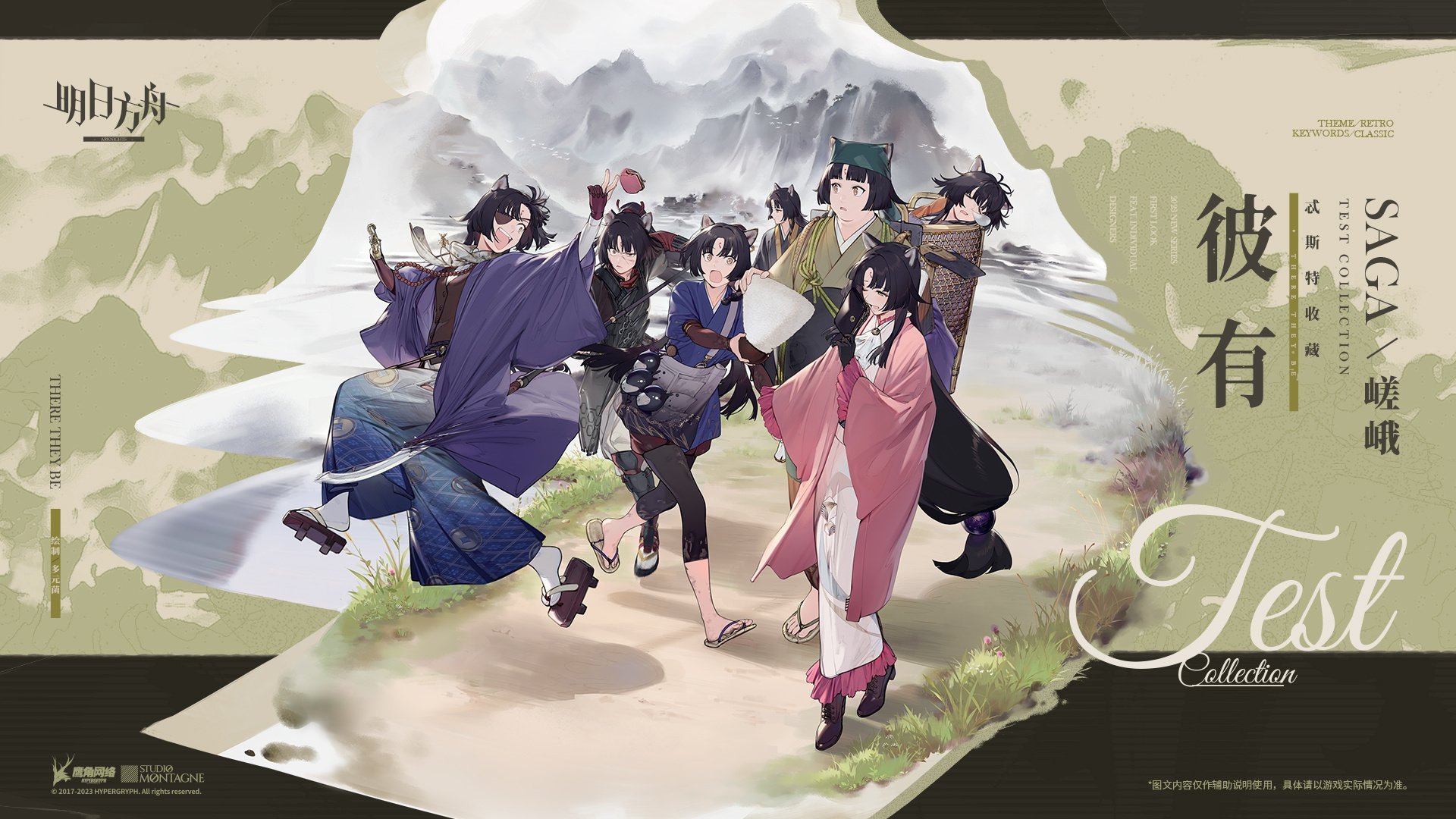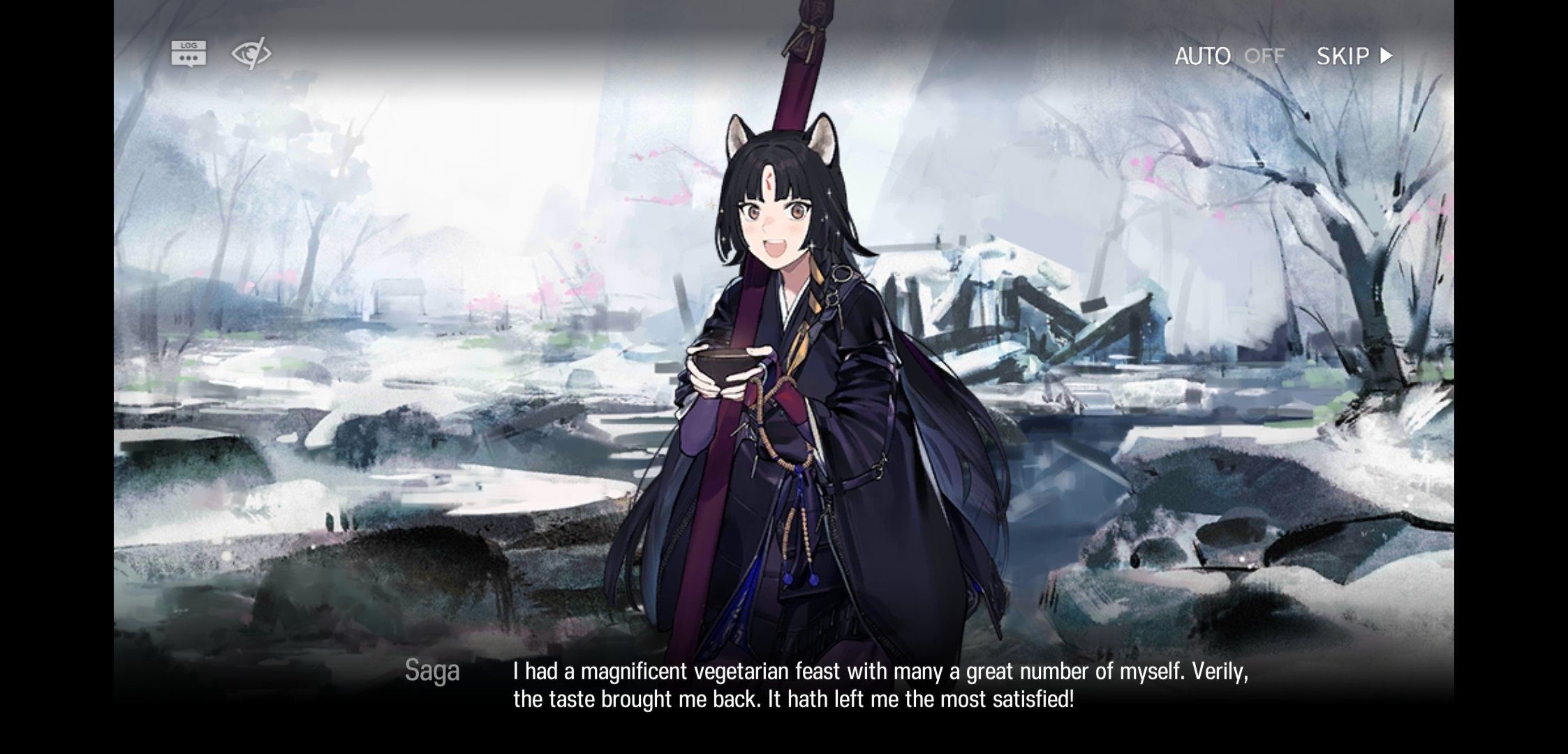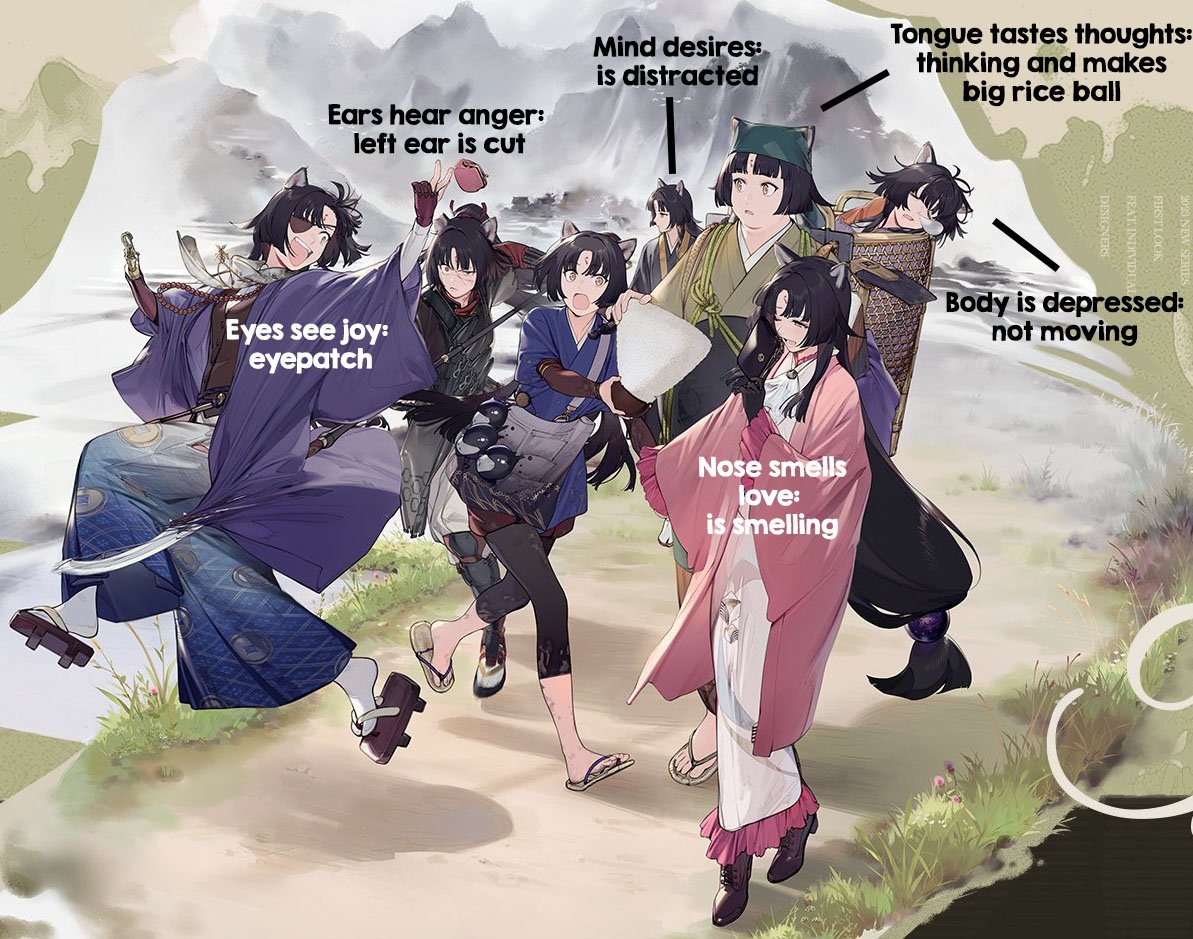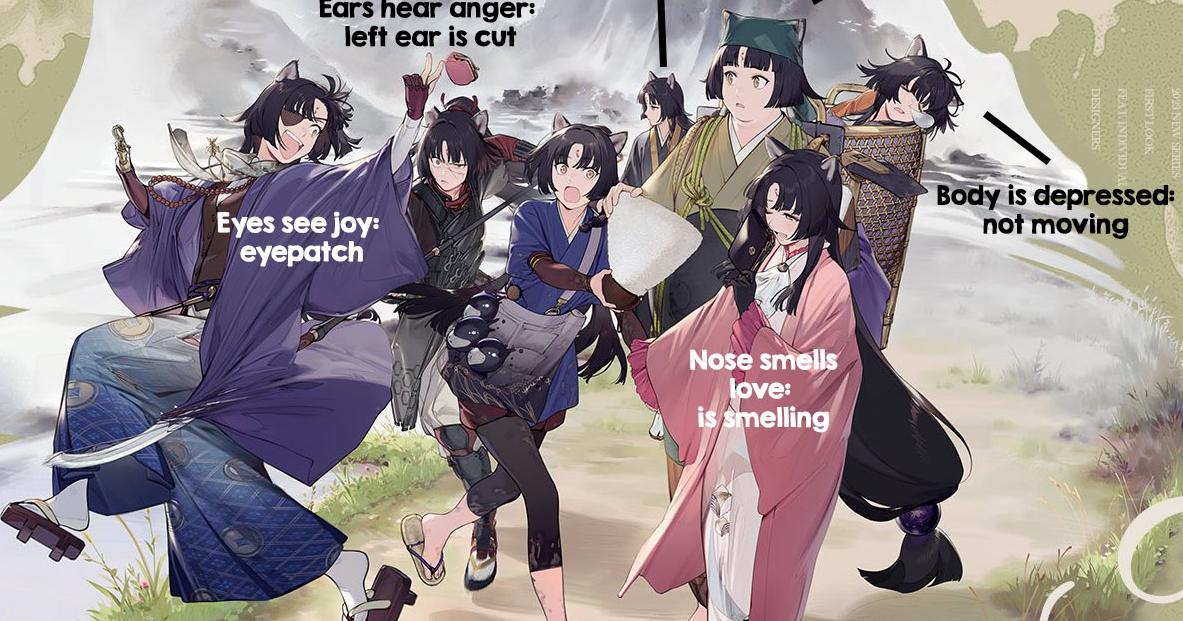Introduction

Saga was the second 6* operator after Eyjafjalla who did not have a costume for a long time. However, when her costume was released, it is sort of justified: there is not just one, but seven of her! Kudos DYJ for the amazing art.
Furthermore, the references are deep, with both references to the plot in Who is Real and several Buddhist beliefs fitting of Saga.
Who Is Real throwback

In Who is Real, Saga encounters the other selves in Dusk's painting. She also mentioned that one of them became a gambler and suffered, which reminds her not to become like her.
Though bewildered, she accepts and has a wonderful time with them.
六根清浄 (rokkon shoujou): Cleanse the six senses
六根清浄 is one of Saga's battle lines where the six senses are the basis of the other selves and the costume.
Six senses? Don't we have five senses? In Buddhism, it is believed that one has six sense (organs): eyes, ears, nose, tongue, body, and mind.
六根清浄 is the eradication of earthly desires caused by the workings of the six sense organs. The “Benefits of the Teacher of the Law” (nineteenth) chapter of the Lotus Sutra says that one can purify the functions of the six sense organs by carrying out the five practices of embracing, reading, reciting, teaching, and transcribing the Lotus Sutra.
The six other Sagas represents the six senses and the emotions that are related to earthly desires.

As Saga travels with her 6 desires, she accepts them. When Saga accepts the desires, she will own them and not let them control her. Purification of the senses is not ridding, but controlling. Such emotions and desires, being naturally born with people, should be released or satisfied as appropriate. But they should not become excessive.
Base animations also shows 六根清浄 as the other dogs show up. (start from 10 seconds to 22 seconds)
In the costume description, the CN text had '此有故彼有,此无故彼无' (This being, that becomes. This not being, that does not become.)
This comes from the Samyutta Nikāya Buddhist scriptures.
The full part:
“此有故彼有,此生故彼生;此无故彼无,此滅故彼滅”.
“This being, that becomes. From the arising of this, that arises. This not being, that does not become. From the ceasing of this, that ceases.”
This is of the key Buddhist doctrine of Pratītyasamutpāda (dependent origination): states that all dharmas (phenomena) arise in dependence upon other dharmas. The basic principle is that all things (dharmas, phenomena, principles) arise in dependence upon other things.
Conclusion
Long time no lore article... Initially I wrote this on Twitter (no I will not call it X) because people thinking that this costume is based on the Western Christian seven sins. Which does not make sense when Saga has such a strong Japanese Buddhist theme.
However, Buddhist concepts are not that well known (most of my research are in Chinese), so I write this to increase the awareness.
Not the first time I'm writing this much about Buddhism. Considering that we have another operator, Sesa, who also has a strong Buddhist motif even if he does not look like it.
Thanks to the initial CN Weibo post I first saw and translated as well as this reply to my tweet for making this article possible too!
Having lesser time to write these days, but will be planning something for So Long Adele (stage names) and of course for Zwillingstrume's chock load of Classical music references.












